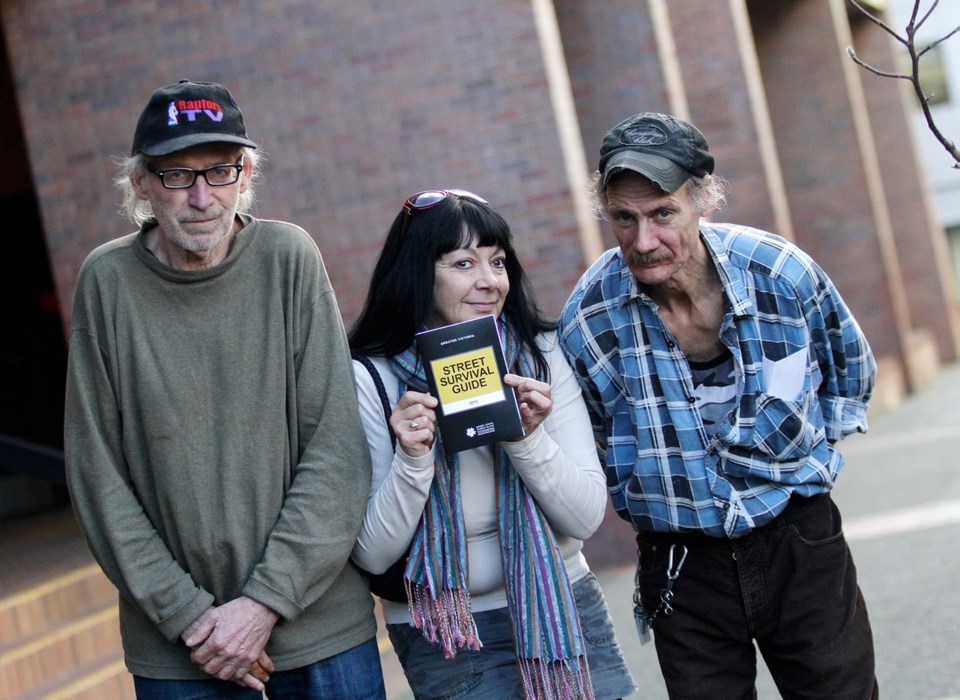Seventeen years of living on the street, struggling with a heroin addiction, have given David Small specialized survival knowledge.
Now that he has a home and is free of drugs, Small welcomes an opportunity to pass on that information as a small repayment for the help he received in turning his life around.
“I have been clean for five years now,” said 38-year-old Small, at the Greater Victoria Coalition to End Homelessness launch of the newly produced Street Survival Guide.
The 18-page guide, printed on water-resistant paper with ink that won’t run in the rain, provides vital information on where to get food or shelter, how to apply for financial aid and where to go to store a cart, have a shower or do laundry.
The 10-member team of volunteers with street-life experience that put together the guide are proud of the end-product.
“This guide would have made a real difference in my life when I was homeless,” team member Jerry McBride said.
“It can take weeks or months to navigate all the services and resources available in Victoria. This simplifies that.”
About 1,000 copies of the booklet have been produced and will be distributed around Greater Victoria agencies, said Hannah Rabinovitch, the coalition’s social-inclusion coordinator who led the project.
More than 80 resources and phone numbers are listed in the guide.
“We only used resources that could be accessed without a referral. We wanted to make sure no one had to walk across town and then have the door shut in their face,” Rabinovitch said.
In addition, a simple map shows where services are offered and the guide offers a quick primer on bylaws and rights.
Under the streets and traffic bylaw, panhandlers cannot ask a passerby for money more than once or panhandle in groups of more than two, the guide reminds readers.
In the My Rights section, it reassures the street community that they have rights such as being able to report a police officer acting inappropriately.
“I can say NO if the police ask to search me or my things. Saying NO does not mean I have something to hide,” the guide says.
Production of the guide was funded by the United Way.
The coalition is looking for partners to help pay for twice-yearly updates and to cover costs of printing more copies, Rabinovitch said.
The process of producing the booklet was almost as important as the finished product. All decisions were consensual and skills ranging from information-gathering to fact-checking were developed, said Hilary Marks.
“It was very inclusive. It helped my self-confidence,” said Nate Moss, who is in a wheelchair.
“Everyone in the group is so supportive of each other and embraces diverse experiences and ideas. This project created a safe space where we were free to be ourselves,” he said.
With the booklet completed, Small, like others on the team, has a gap in his routine. But, he said, it will be taken up by his efforts to keep himself healthy.
“I am HIV-positive and I have hep B, C, and D. I’m a walking acronym,” Small said.
“I came out of addiction with a couple of bullet scars, but I plan on living for a good 40 more years.”
And he hopes that someone else, making a hard landing on Victoria’s streets, may be able to use the information in the survival guide to avoid getting their own scars.



